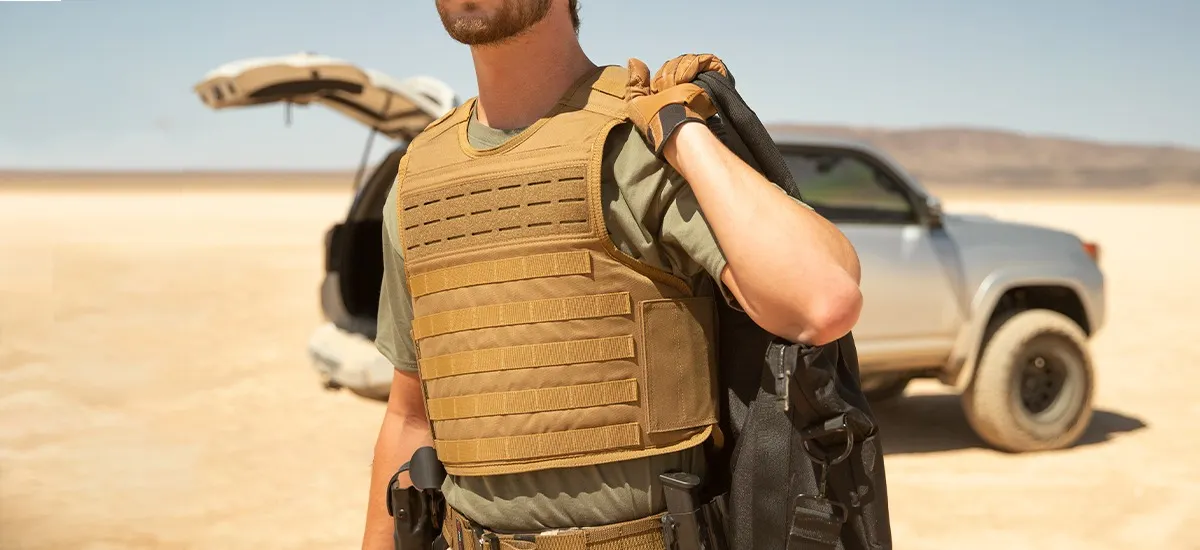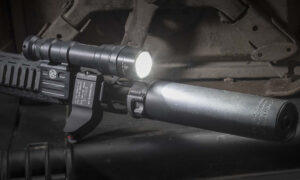Body armor is unquestionably among the most dependable and efficient pieces of personal protection gear. It shields the body from pistol and machine gun bullets in the first place, and it also holds up well to grenade fragments during explosions. Among the large abundance of body armor, it is sometimes very difficult to choose the one that will satisfy all the requirements and will suit you both in terms of properties and price. However, you will undoubtedly find what you need and brands you want at online stores. There is only one parameter — protective class — by which you may select a bulletproof vest. All additional elements are tangentially included. The parameter’s value rises as a result, as do the continuous wear time and body protection area.
What is body armor?
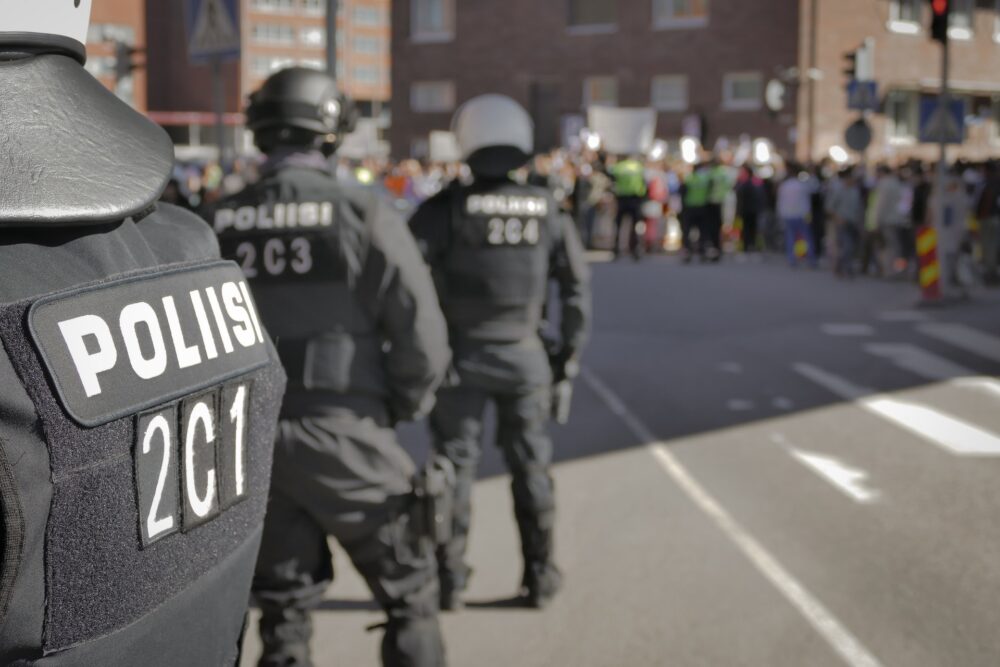
Source: unsplash.com
A bulletproof vest is a kind of personal defense that may shield the body from wounds caused by bullets and other projectiles. Modern body armor often takes the shape of a sleeveless jacket with a stand-up collar. A bulletproof vest could be included in the fighter’s gear or be purchased separately. The basic requirement for materials used to make bulletproof vests is that they can stop a bullet.
Each piece of modern body armor has three essential components, two of which must exist. The first part is a cover that provides no security. To wear a personal protection tool, one needs to put on a cover. The second component is a package made of ballistic fabric that serves as the first line of defense. The third element is a plate, which provides a second line of defense.
Body armor protection classes
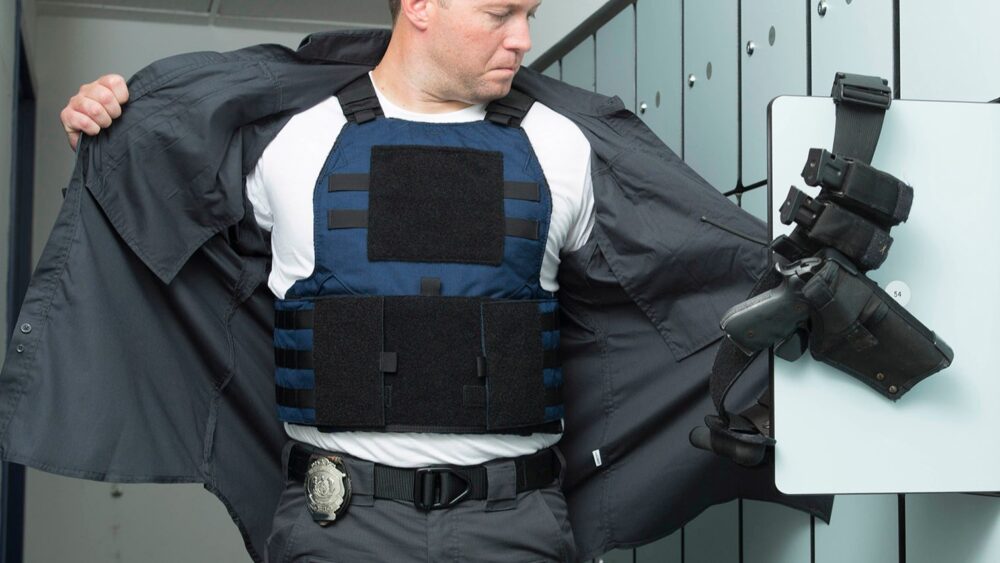
Source: police1.com
There are 10 classes of body armor, namely: special, 1, 2, 2a, 3, 4, 5, 5a, 6, and 6a. The level of protection, when struck by a bullet of a specific caliber, mass, and speed level, is the main criterion for such a distribution. With each level of protection, the bullet resistance increases, and the bulletproof vest itself becomes more effective against a particular kind of weapon.
- Protection against edged weapons is provided by a special class.
- Bullet vest class 1 is the lightest, weighs up to 3 kg, consists of fabric layers, and protects well only from pistols. The material itself is heat- and moisture-resistant; higher classes use the same material, but additional armored plates are added.
- Class 2 bulletproof vests can weigh up to 5 kg and are identified by metal plates sewn into the fabric base in the most vulnerable areas able to withstand 9mm rounds.
- Class 2a bulletproof vests protect against hunting rifles.
- 3 class bulletproof vests contain more fabric layers and metal plates covering the majority of their surface. These body armors typically weigh between 9 and 11 kg. The fighter’s mobility is significantly reduced as a result, but his chances of survival are increased. With such body armor, the fighter is well protected from light, tiny weapons like submachine guns. These PPE products usually include compartments for certain purposes, a holster for a firearm, and magazine pouches.
- 4 class bulletproof vests offer good defense against bullets fired from both pistols and machine guns, including the Kalashnikov assault weapon. Army and police personnel employ this personal protection equipment. These bulletproof vests are built of robust, lightweight titanium or aluminum alloy metal plates. When ceramic-metal plates are utilized, the level of protection is sometimes raised to class 5 or 6.
- 5 class bulletproof vests offer the best defense against submachine gun rounds. They can deal with AK-fired 7.62×39 mm rounds that can weigh up to 8 g.
- The class 5a armored vest type is specifically designated for a rare armor-piercing incendiary bullet type. These garments are made of aramid armor panels that have been strengthened with ceramic inserts with the proper level of protection. It is possible to protect the neck, groin, or other areas of the body using supplementary tools such as anti-ricochet screens.
- The 6 class of protection armored vehicles is currently the most common. They are resistant to shots from sniper rifles, machine guns, and other weapons. Special forces frequently employ them in very risky military missions. The majority of body armor consists of modular items with improved ceramic plates that can withstand multiple direct hits while still remaining integral.
- 6a class body armor is the last and strongest kind. The personal protective equipment of which is primarily the same sixth-grade armored vehicles strengthened with ceramic plates to fight the 10.4 g, 7.62×54 mm, armor-piercing bullets. Such vests can survive sniper rifle fire from a distance of 10 meters.
How to choose body armor?
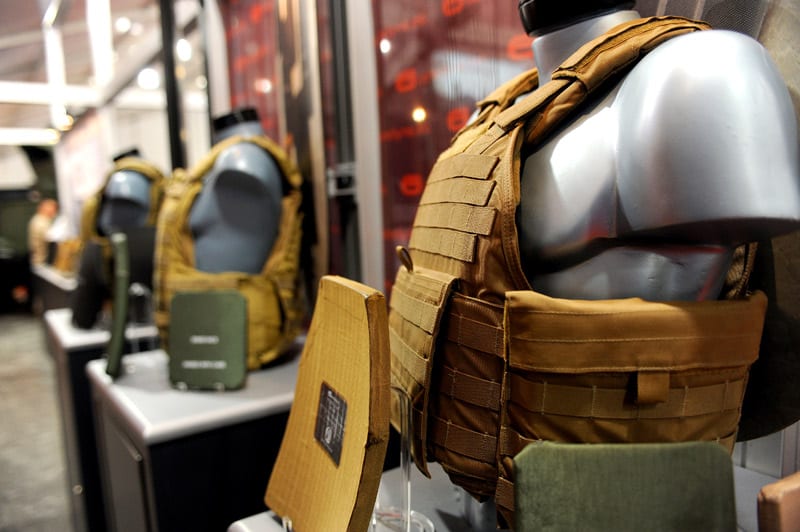
Source: defensemedianetwork.com
Depending on the objectives of the operation, an armored house for sappers, the military, the police, or collectors provides protection from various types of weapons. It is important to select body armor that is both comfortable to wear and suitable for your size. A body suit that is too large will slide, and a suit that is too small could cause more injuries.
Additional protection pieces for shoulders, groin, and lower back are commonly included in body armor. Additionally, it could have auxiliary parts like pockets or attachments with internal communication channels. If you wish to add any additional protection to your military vest, be sure the shoulder, neck, and groin protection you buy are specially designed to suit your vest.
When selecting body armor, one must also be aware that heavy body armor is best suited for short-term special operations and special units since it makes a person less clumsy and increases the likelihood that they will be hit by a bullet. Other qualities, such as ease of putting on and taking off, even in the event of injury, are crucial for a soldier who engages in hostilities.
Don’t forget that while choosing a body armor, you must first take the class into account. The higher the class, the stronger the defense against a bullet of a certain caliber, mass, and speed level. The greatest thing you could do is get a bulletproof vest.


